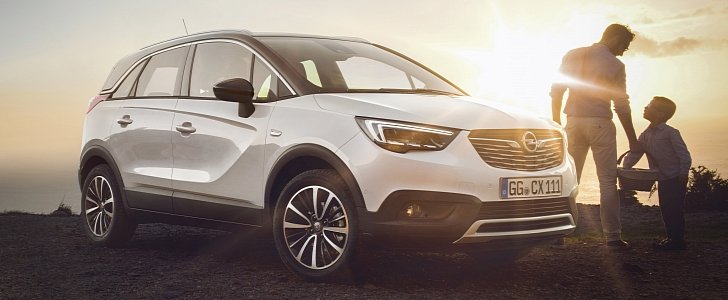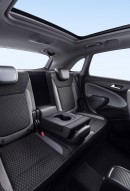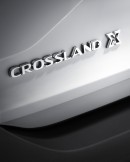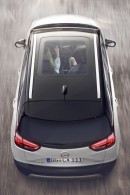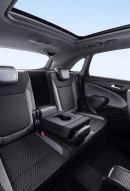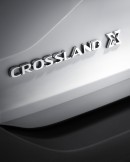Introduced earlier in the year, the Crossland X is selling like hot cakes in subcompact crossover-craving Europe. Available with pretty much the same engines as the Peugeot 2008, the Meriva-replacing model is now available with an LPG-fueled 1.2-liter that’s cheaper to run than the gasoline equivalent.
In addition to running costs, another benefit of using liquefied petroleum gas comes in the form of lower carbon dioxide emissions. The LPG variant of the 1.2-liter engine is rated at 8.4 l/100 km urban, 6.0 l/100 km extra-urban, and 6.9 l/100 km combined, producing 111 grams of CO2/km. By comparison, the gasoline-fueled variant is good for 6.8 l/100 km urban, 4.5 l/100 km extra-urban, 5.4 l/100 km combined, and 123 grams of CO2 per kilometer (NEDC).
Opel makes a case for the Crossland X 1.2 LPG by highlighting the electronic multivalve system which improves frugality compared to conventional LPG powertrains. The secret is an optical sensor fitted to the LPG tank, which measures the remaining fuel more precisely than a conventional sensor sender. The 81-horsepower three-cylinder engine, which is connected exclusively to a 5-speed manual, also happens to benefit from hardened valves and seat-rings.
With a full tank of LPG and a full tank of gasoline, the Crossland X features a NEDC-rated range of up to 1,300 kilometers (807 miles), and that’s thoroughly impressive whichever way you look at it. But then again, it’s not cheap, with the Edition trim level kicking off at €21,200 in the crossover’s domestic market of Germany. Stepping up to the Innovation will set you back €22,400.
It should be noted, however, that going the way of the LPG means that the spare-wheel well no longer houses the spare wheel, but the 36-liter LPG tank. On the flip side, the German government offers a tax concession for LPG until 2022. Available throughout Europe at approximately 25,000 gas stations, liquefied petroleum gas (butane and propane) is here to stay for the foreseeable future.
Opel makes a case for the Crossland X 1.2 LPG by highlighting the electronic multivalve system which improves frugality compared to conventional LPG powertrains. The secret is an optical sensor fitted to the LPG tank, which measures the remaining fuel more precisely than a conventional sensor sender. The 81-horsepower three-cylinder engine, which is connected exclusively to a 5-speed manual, also happens to benefit from hardened valves and seat-rings.
With a full tank of LPG and a full tank of gasoline, the Crossland X features a NEDC-rated range of up to 1,300 kilometers (807 miles), and that’s thoroughly impressive whichever way you look at it. But then again, it’s not cheap, with the Edition trim level kicking off at €21,200 in the crossover’s domestic market of Germany. Stepping up to the Innovation will set you back €22,400.
It should be noted, however, that going the way of the LPG means that the spare-wheel well no longer houses the spare wheel, but the 36-liter LPG tank. On the flip side, the German government offers a tax concession for LPG until 2022. Available throughout Europe at approximately 25,000 gas stations, liquefied petroleum gas (butane and propane) is here to stay for the foreseeable future.
